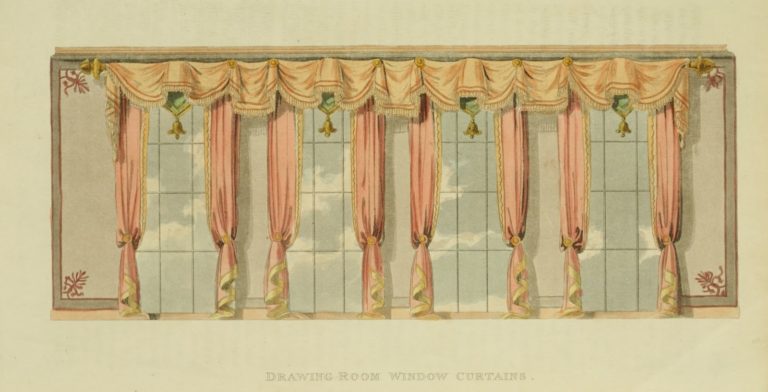
Britain has a rich interior design history, adding a flare of dramatic changes that developed window treatments through the ages. It has taken centuries for our modern day home decor to include multiple styles of shutters, curtains and blinds.
Over 2,000 years ago Romans developed their first “window treatment” to prevent dust and debris from getting into their homes. Their solution was to hang a damp piece of cloth over the windows and doors to collect the dust particles. Thus, the first air-con system was born from these Roman shades.
Fast-forward to the 16thC when wooden shutters were ‘à la mode’ in English homes. These shutters, along with a single piece of fabric hung from an iron rod to cover doors and windows, blocked out drafts and debris, while also providing privacy.

Shutters stayed popular in England through the 1600s. Curtains weren’t used until the middle of the century, especially in modest households. Influenced by French and Italian designers, who has begun to incorporate symmetry into interior designs and architecture, born was the era of curtains being styled on both sides of a window.
Designers experimented with various styles of curtains, from pull-ups to swags and later, decorative pelmets, valances and trims, used to conceal the pull mechanics.
With a wide range of fabrics, this provided homeowners a choice of how they could decorate while still achieving privacy.
It was in the 18th century when the British silk industry came into its own. Affluent homeowners were able to decorate their homes in spectacular flare. Roller and Venetian blinds were later introduced to allow the admission of light, but to also protect furniture from the sun’s harsh rays.
With the Industrial Revolution came cotton, allowing for the mass production of blinds and curtains for any homeowner, regardless of budget. In France, the first cord-and-pulley system was introduced as homeowners began to layer muslin, curtains, cornices and valances to create an effect now known as ‘French drapery.’

The Victorian era was a time of decadence for those who could afford it. This need to display opulence carried through to the interior design of homes at the time. Homes began to incorporate roller blinds, muslin curtains and large, embellished lambrequins, which can often have a sculptural shape to it.
However, mass production was taking a toll on Britain’s silk industry, which in the 19th Century was on the decline. Increasing in popularity was dying and printing techniques, improving the colour and patterns that were starting to be integrated into fabric patterns.

With the turn of the century window treatments became far simpler. This was partly attributed to fabric rationing in WWI and WWII. By the 1940s, ready-made curtains started to appear in shops and home catalogues and were usually combined with plain pelmets and later, Venetian blinds.
Limited choice in dyes meant that furnishings featured two or three colours of a neutral background. Simple weaves were the trend until the late 1950s, when bold colours and designs like flowers, geometric shapes and abstract patterns came into fashion.
As the decades went by the patterns returned to more natural and softer pastel textiles. Through the 1980s there was a brief revival of pull-up blinds and a harkening back to Neo-Edwardian English Country style. However, when the 90s begun, interior design and window treatments returned to a minimalist look.

Carrying on the tradition of window treatments that are minimal, but perfect for providing privacy from peeping Toms, get your BlindsInABox blinds. Requiring no tools to set up and temporary, so you can remove your paper blinds whenever you’d like, get yours now.
